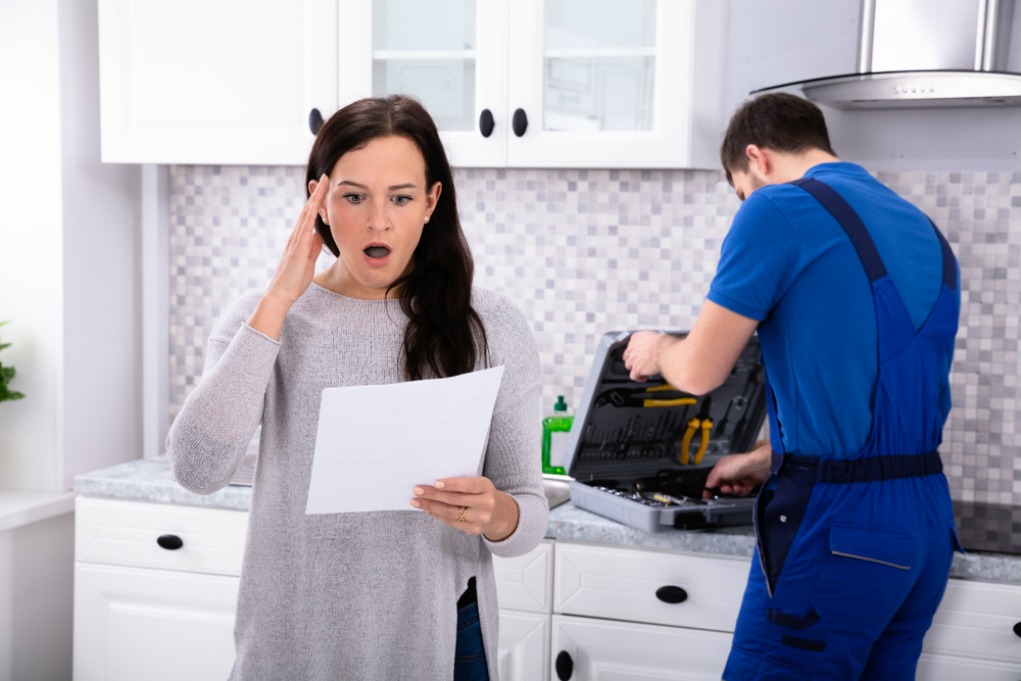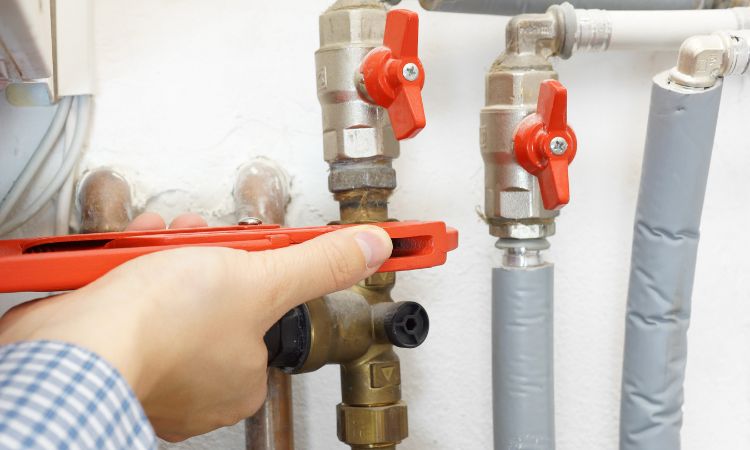Dealing with Plumbing Issues in Older Homes: Professional Guidance
Dealing with Plumbing Issues in Older Homes: Professional Guidance
Blog Article
The content down below involving Common Plumbing Challenges In Old Buildings is truly insightful. You should read it.

Older homes typically come with beauty, character, and background, however they can also bring a host of pipes problems. Whether you're taking care of maturing pipes, low tide stress, or leaks, understanding exactly how to deal with these common troubles is critical to preserving a safe and useful home. In this guide, we'll discover the regular pipes difficulties encountered by older homes and provide useful remedies to maintain your plumbing in leading shape.
Recognizing Typical Pipes Issues
Aging Pipelines
One of one of the most common concerns in older homes is aging pipes. Relying on the age in which your home was built, the pipes could be made from materials that have actually deteriorated gradually, such as galvanized steel, cast iron, or perhaps lead. These products can corrode, become breakable, or establish leakages, leading to water damage and possible health hazards.
Water Quality Screening
Older pipes can affect the high quality of your water. Conduct a water quality test to look for impurities such as lead, rust, or other contaminations that may be presented by maturing pipes.
Solutions for Typical Pipes Concerns
Changing Aging Pipes
If your home has old, deteriorating pipes, think about changing them with modern-day products like copper or PEX. This can be a significant financial investment, yet it will certainly prevent future issues and enhance the security and integrity of your pipes system.
Repairing Low Water Pressure
To take care of low tide stress, beginning by cleansing or replacing old components and eliminating mineral build-up in the pipelines. If the trouble lingers, it might be essential to replace sections of corroded pipes.
Repairing and Replacing Leaking Pipes
For little leakages, you can make use of pipe clamps or epoxy putty as a short-term solution. Nonetheless, it's ideal to replace leaking pipes entirely to stay clear of more damages.
Updating Components
Updating old components to modern-day, water-efficient versions can enhance your home's plumbing performance and decrease water usage. Search for fixtures with the WaterSense label for the very best performance.
Managing Pipeline Rust
If your pipelines are rusted, replacing them with corrosion-resistant products like copper, PVC, or PEX is the best option. Routine assessments and water quality upkeep can aid protect against further rust.
Low Water Pressure
If you're experiencing low water pressure, maybe because of mineral deposits, corrosion inside the pipelines, or old components that are no longer working efficiently. This can be a significant aggravation, particularly in areas like showers and sinks.
Dripping Pipelines
Leaks are another constant problem in older homes, typically caused by rusty or worn-out pipelines. Also little leaks can bring about considerable water damage, mold and mildew growth, and enhanced water costs otherwise addressed without delay.
Out-of-date Fixtures
Obsolete plumbing fixtures such as taps, bathrooms, and showerheads not only look old yet may additionally be less reliable, vulnerable to leaks, or incompatible with modern-day plumbing criteria.
Pipe Deterioration
Rust is a common issue in older pipelines, especially those made from galvanized steel or actors iron. Corroded pipelines can restrict water circulation, cause staining, and eventually cause leakages or pipe ruptureds.
Evaluating the Problem of Your Pipes
Inspecting Visible Pipes
Beginning by examining any kind of visible pipes in your home, such as those in cellars, crawl spaces, or under sinks. Look for indications of deterioration, leaks, or rust, which can show underlying issues.
Checking for Leakages
Look for leaks by checking areas around faucets, commodes, and under sinks. You can also monitor your water meter prior to and after a duration of no water use to find surprise leaks.
When to Call an Expert
While some pipes issues can be managed with do it yourself remedies, there are times when it's finest to call a professional. If you're taking care of significant leakages, comprehensive rust, or are unclear regarding the problem of your pipelines, a licensed plumbing can supply experienced assessment and repair.
Preventive Upkeep Tips
Normal Inspections
Routinely check your pipes system for indications of damage. Capturing issues early can avoid costly repair work down the line.
Water Pressure Policy
Ensure your water pressure is within the advised array to stay clear of emphasizing your pipelines and components. A plumbing professional can mount a stress regulator if needed.
Water Quality Upkeep
Mount water filters or conditioners if your water top quality is poor. This can shield your pipelines and components from damages triggered by difficult water or pollutants.
Aggressive Pipeline Replacement
If your home has older pipelines, think about proactive replacement prior to major issues arise. This can conserve you from emergency repairs and water damages.
Final thought
Handling pipes concerns in older homes needs a mix of vigilance, precautionary maintenance, and prompt upgrades. By comprehending the common obstacles and understanding when to seek professional aid, you can ensure your plumbing system stays practical and reliable for years to find.
Common Plumbing Issues in Older Homes and How to Fix Them
Owning an older home in Australia comes with its unique charm and a set of challenges, especially when it comes to plumbing. The Sunshine Coast has many older properties that can harbour plumbing problems that aren t just inconvenient but potentially costly. Here s a look at some common plumbing issues in older homes and expert advice on how to handle them.
Outdated Piping Materials
Many older homes were built with galvanised steel, cast iron, or even lead pipes, materials that are far from ideal by today s standards. Galvanised pipes are prone to corrosion and clogging, while lead pipes pose serious health risks.
How to Fix:
Replacing old pipes is a job for a professional. Upgrading to copper or PVC piping not only enhances water quality and flow but also increases the property s safety and value. If you suspect your home has outdated materials, a licensed plumber can conduct a thorough inspection and recommend the best course of action.
Corrosion and Pipe Degradation
Over time, exposure to water and minerals can cause pipes to corrode, leading to leaks, bursts, and water contamination. Corrosion is especially common in homes over 50 years old.
How to Fix:
Regular inspections can catch early signs of corrosion. If corrosion is found, the affected section of piping often needs to be replaced. For homes with extensive corrosion, a complete plumbing overhaul might be necessary. It s crucial to consult with a plumbing expert to understand the extent of the issue.
Tree Root Intrusion
Older neighbourhoods usually have mature trees whose roots can intrude into pipe lines, causing blockages or damage. This is particularly problematic for sewer lines, where roots seek out water sources.
How to Fix:
A plumber can use a specialised camera to inspect sewer lines for root intrusion. If roots are a problem, methods like root cutting or hydro-jetting can clear the obstruction. In severe cases, part of the pipe may need replacing. Consider root barriers around the piping to prevent future issues.
Inadequate Water Pressure
Low water pressure in older homes can be due to various factors, including corroded water lines, sediment build-up in pipes, or outdated fixtures.
How to Fix:
First, check if the low pressure is isolated to one area or throughout the house. Replacing old fixtures can sometimes resolve the issue. However, if the problem is more widespread, it might be due to sediment or corrosion. Flushing the system or replacing the affected pipes usually restores normal pressure. Again, a professional assessment is advisable.
Outdated Fixtures
Older homes often feature fixtures that are not only visually dated but functionally inefficient. This includes everything from toilets and taps to showerheads and washing machine hoses.
How to Fix:
Updating these fixtures can improve both water efficiency and the aesthetic appeal of your home. Modern fixtures are designed to conserve water, which can significantly reduce your water bill and lessen your environmental impact.
Conclusion
Maintaining the plumbing in an older home requires a proactive approach. Regular checks and updates are key to preserving these beautiful properties. If you re facing plumbing issues in your older home, it s best to call on experienced professionals like Green & Gold Plumbing & Gas. With the right expertise, even the most daunting plumbing problems can be resolved, ensuring that your home s character is maintained while its functionality is enhanced.
https://gandgplumbing.com.au/common-plumbing-issues-in-older-homes-and-how-to-fix-them/

Hopefully you enjoyed our article on Main Plumbing Issues Found in Old Houses. Many thanks for taking a few minutes to read our blog. Sharing is good. Helping people is fun. I treasure reading our article about Plumbing Problems In Old Homes.
Visit Url Report this page